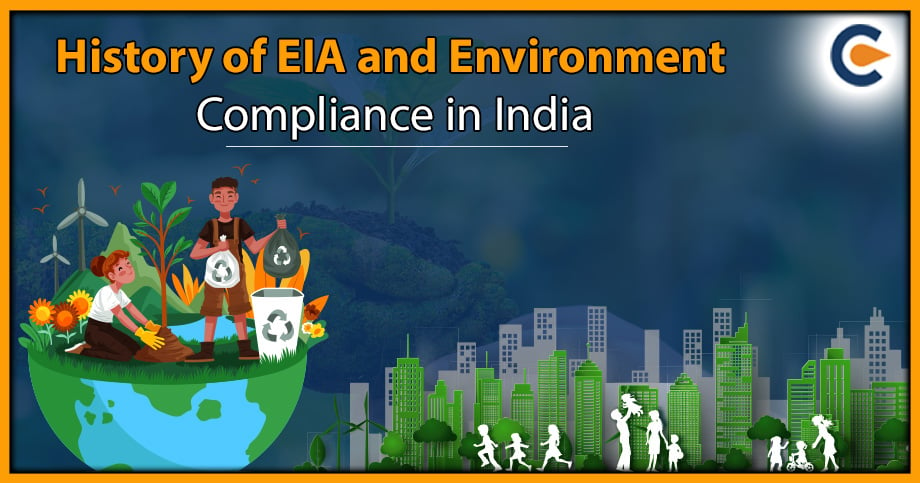EIA and Environment Compliance in India began in 1976-77 when the Planning Commission directed the then-Department of Science and Technology to investigate river-valley projects from an environmental standpoint. This was later expanded to include projects that required clearance from the Public Investment Board. These were administrative judgements. On May 23, 1986, the Government of India passed the Environment (Protection) Act. One of the decisions made to meet the Act aimed to make EIA statutory. Following the legal procedure, a notification was issued on January 27, 1994, and was later revised on May 4, 1994, April 10, 1997, and January 27, 2000, making environmental impact assessment mandatory for 30 operations. This is the main piece of legislation that governs EIA and Environment Compliance in India. Aside from that, the Government of India released several notifications related to environmental impact assessment under the Environment Protection Act of 1986[1].
Environmental Clearance Procedure in India
The EIA process in India is made up of the following phases:
- Screening: The first stage of EIA is determining whether the proposed project requires an EIA and the necessary level of assessment.
- Scoping: The important issues and impacts that should be examined further are identified during this step. This stage also establishes the study’s boundaries and time frame.
- Impact analysis: This step of EIA identifies and forecasts the possible environmental and social impacts of the proposed project, as well as assesses its significance.
- Mitigation: In this level of the EIA process, actions are recommended to reduce and avoid the potential negative environmental repercussions of development activities.
- Reporting: At this point, the EIA results are presented to the decision-making body and other interested parties as a report.
- EIA review: It assesses the adequacy and efficacy of the EIA report and provides decision-making information.
- Decision-making: It determines if the proposal should be rejected, approved, or modified further.
- Post-monitoring: This stage begins after the project is commissioned. It ensures that the project’s consequences do not exceed regulatory limits and that mitigation measures are implemented as stated in the EIA report.
The environmental regulating authority’s efforts to protect and preserve India’s environment bear fruit. The National Green Tribunal (NGT) directed the environmental regulatory bodies, including the Central Pollution Control Board and State Pollution Control Boards, to strictly implement and consider the Comprehensive Environmental Pollution Index. With the rapid growth of the economy, substantial environmental challenges such as pollution control, waste management, natural resource conservation, climate change, and so on have arisen. The SEBI established the Business Responsibility and Sustainability Report (BRSR), and requires reporting on environmental, social, and governance (ESG) factors beginning with the next fiscal year.
Major Environment Compliances Laws of India
The main environmental laws in India are as follows:
- Bio-Medical Waste Management Rules 2016;
- Plastic Waste Management Rules 2016;
- Construction and Demolition Waste Management Rules 2016;
- Solid Waste Management Rules 2016;
- Air (P&CP) Act 1981.
- Water (P&CP) Act 1974;
- E-Waste (Management) Rules 2016;
- Batteries (Management & Handling) Rules 2001;
- Coastal Regulation Zone Notification 2019; and
- Hazardous and Other Waste Transboundary Movement Rules 2016;
- Environment Impact Assessment Notification 2006.
- Wild Life (Protection) Act 1972.
- Forest (Conservation) Act 1980.
- Public Liability Insurance Act 1991.
- Biological Diversity Act 2002.
- National Green Tribunal Act 2010.
Multiple permits may be required depending on the sort of activity carried out by a corporation. Companies/industries must obtain site operations from environmental permit applications and statutory records and returns. Companies/industries must keep records of waste categorisation and inventory, labelling on the hazardous chemical and hazardous waste containers, documented information about waste vendors, and the eventual fate of disposed of wastes.
Noncompliance by these regulators will result in action and the imposition of penalties by the Environmental Protection Act, the National Green Tribunal, and the courts. Companies/industries must have proper management, adequate knowledge of the applicable regulations, and an understanding of the actions required to demonstrate compliance.
The National Green Tribunal (NGT) directed the environmental regulatory bodies (Central Pollution Control Board (CPCB) and State Pollution Control Boards (SPCBs) to aggressively implement and consider the Comprehensive Environmental Pollution Index (CEPI). CEPI assigns weight to various contaminants, ambient pollutant concentrations, receptors (the number of persons impacted), and other high-risk factors. The original CEPI assessment was carried out in 2009, but the CEPI criteria was modified in 2016, and the final CEPI report was produced in 2018.
Following that, the NGT directly oversaw the regulatory authorities’ implementation of the CEPI criteria. Under the CEPI, industrial clusters are now classified as Polluted Industrial Areas (PIAs), with each ranked as one of the following:
- A critically polluted area (CPA).
- A severely polluted area (SPA).
- Other polluted areas (OPAs).
The CPCBs and SPCBs will now focus on remediating these CEPI zones and collecting compensation from polluting companies and will refuse any new site expansion or development in these regions.
Legislation for Environment Compliance
The primary environmental laws in India, under which different key environmental licences (or consents) are given, are as follows:
- The Water (P&CP) Act of 1974 (Water Act), which established the powers, functions, and hierarchies of the environmental agencies, CPCBs, and SPCBs.
- Air (P&CP) Act of 1981 (Air Act).
- Environmental Protection Act of 1986 (EP Act). This umbrella law empowers the central government to take any necessary actions to protect and improve the environment and avoid, manage, and mitigate the pollution.
- Wild Life (Protection) Act 1972.
- Forest (Conservation) Act 1980.
- Public Liability Insurance Act 1991.
- Biological Diversity Act 2002.
- National Green Tribunal Act 2010.
SEBI had announced the Business Responsibility and Sustainability Report (BRSR) in May 2021, along with new reporting standards for environmental, social, and corporate governance (ESG). The BRSR requests disclosures from listed firms on their performance on the nine principles of the National Guidelines on Responsible Business Conduct (NGBRCs), with reporting divided into essential and leading indicators for each principle. All the essential indicators must be reported on a mandatory basis, whilst the leadership indicators must be reported voluntarily (although listed entities should try to report these too). Filing of BRSR is compulsory for the top thousand listed businesses (by market capitalisation) beginning with the fiscal year 2022-2023, replacing the present Business Responsibility Report (BRR) requirements.
Conclusion
EIA is becoming increasingly crucial in accomplishing the objective of sustainable development. Every industry is required to mandatorily meet the relevant environmental regulations. Indian legislation addresses various environmental challenges ranging from air pollution to waste management to coastal area contamination. The Indian constitution is one of the few in the world with environmental conservation laws and a specialised court/tribunal. The gas leak at the Polymer Plant in Vizag which killed as many life was discovered to have been operating without appropriate environmental clearances for decades, jeopardising the sustenance of the River Cauvery in the region- are certain occasions in which luck has not prevented.
Therefore, it has always been the goal and intention of environmental legislation worldwide and in India to uphold and promote a balance between development and environmental preservation.
Read Our Article: ESG Reporting: Is It Mandatory In India?











